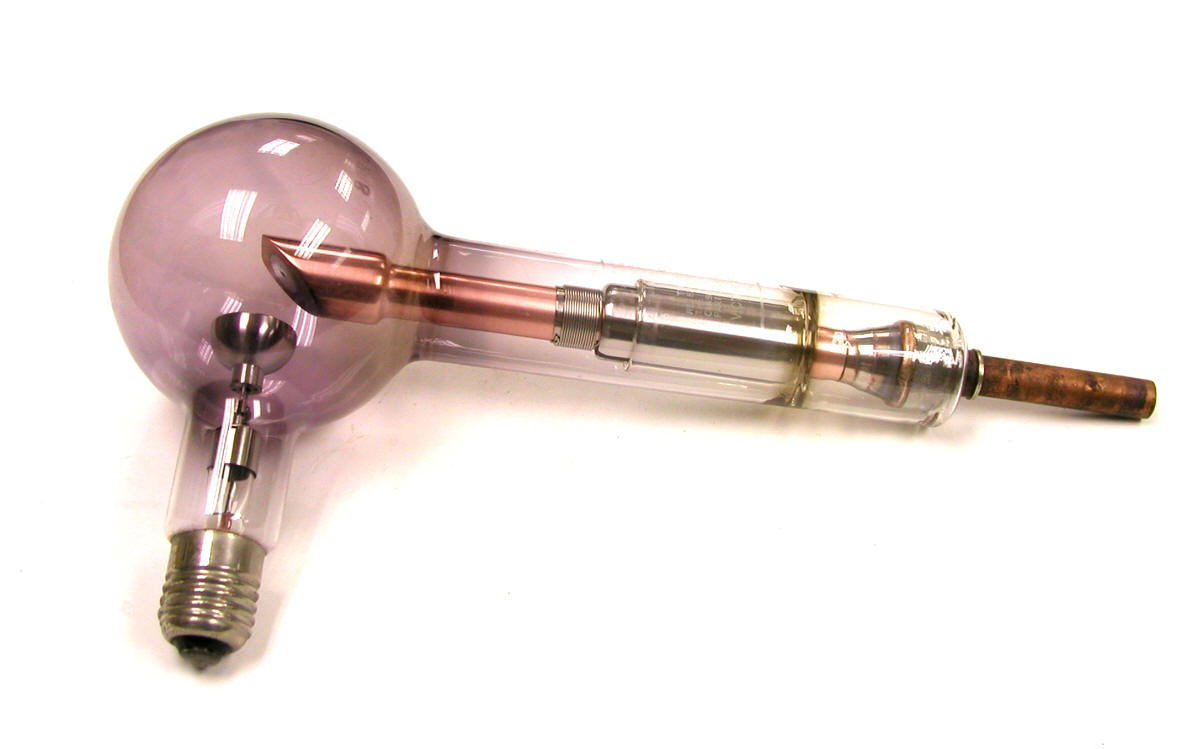Victor RD Dental X-ray Tube (ca. 1926-1930)

This is the RD dental X-ray tube manufactured by the Victor X-Ray Corporation, a subsidiary of General Electric (GE). The estimated date of manufacture (ca. 1926-1932) is based on the last patent date on the tube (October 20, 1925) and the fact that the GE began phasing out the "Victor" name in the early 1930s.
In 1919, General Electric introduced the earliest version of this tube. In fact, it was the first x-ray tube to be specifically designed for dental radiography. At the time, General Electric produced three types of Coolidge tubes: the “Universal” tube, the “Radiator” tube and the “Radiator Dental tube.”
According to the GE Instruction manual (1920), the filament, focusing cup, and anode were exactly the same in the Dental and the Radiator x-ray tubes. In addition, both types of tubes were self-rectifying. In other words they could be connected directly to an induction coil or transformer without a valve tube (or tubes) or other rectifying device.
In the top photo, the focusing cup faces up, towards the tungsten target that is embedded in the sloped face of a copper block. The block, in turn, is connected to a copper rod that extends through the end of the glass arm attached to the right side of the spherical bulb.

In the photo to the left, the tube’s tungsten filament can be seen inside the hemispherical focusing cup.
When the tube was being used, a finned metal radiator would be positioned over the exposed end of the copper rod in order to dissipate heat into the air. Unfortunately, our tube is missing its radiator. However, you can see one with one of the radiator tubes in the collection.
The recommended maximum operating current, 10 milliamps, is etched onto the glass bulb just above the Victor logo. Also etched on the glass are the letters "RD" and the serial number "29853."
A very similar tube is described in General Electric Bulletin No. 293 (1934) as their model RA dental tube. The bulletin indicates, or strongly implies that, “RA” stands for “right angle.’ Quoting the description of the tube:
“Model RA Right Angle Air-Cooled Coolidge X-ray Tube. The Model RA tube has been widely used for dental radiography. Its right angle construction allows the use of short distance technics necessary in this type of work without undue hazard to the patient or operator. Maximum Rating: 63 kv.p., 10 ma., 75 seconds. Filament Characteristics: 3.5 to 4.5 amperes, 4.0 to 7.0 volts.”
What is the relationship between the Victor Model RD and the GE Model RA tubes? I suspect that they are the same and that it was simply a case of GE changing the model designation when they completely stopped using the Victor name.
This brings up another question, “What does the “RD” designation for our tube indicate?” Almost certainly, it stood for “Radiator Dental.” The earliest reference I have seen for this tube (Instruction Book, 1920) described it as the Radiator Dental Coolidge Type X-ray tube.
The right angle design was a very compact configuration, something particularly advantageous in a dental unit because the tube needed to be positioned close to the patient.
GE marketed this tube by emphasizing safety. Initially, this resulted in some confusion because people thought GE meant a reduced hazard from X-rays. What GE really meant was a reduced chance of the patient and dentist being electrocuted. This was accomplished by grounding the electrode closest to the patient, the cathode, and according to the original patent (1919), by having the “terminal [anode] which is at high potential... extend away from a patient being examined to avoid danger of electric shock.” The patent also noted that the tube was “particularly suitable for operation by people who have little special training in the operation of X-ray apparatus.” Dentists?
Kindly donated by Margie Wheaton in memory of her father Dr. Julius E. Marfy.
Size: Approximately 12" long with a bulb diameter of approximately 3.5"
References
- ERN Grigg. Trail of the Invisible Light. Charles C Thomas 1965.
- General Electric X-ray Corporation. Coolidge X-ray Tubes - Kenotrons. Bulletin No. 293. 1934.
- General Electric Company. Instruction Book 89136B. Coolidge X-ray Tube. 1920.
- Coolidge, W.D. X-ray Apparatus. U.S. Patent 1,310,061. July 15, 1919.
- Raper, H. Safety and the Coolidge Dental X-ray Tube. Oral Hygiene Vol. 9. No. 12. 1919.
